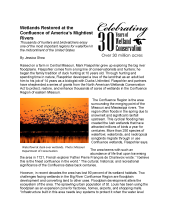Waterfowl-dense habitat preserved in Manitoba, Canada
By Jessica Shea
Early one warm June morning Curtis Hullick took a walk on land owned by the Shearer family in Manitoba, Canada. The morning was still, apart from the sounds of birds.
“I heard grassland birds, like bobolink and Sprague's pipit, and a lot of waterfowl, like blue-winged teal and mallard,” says Hullick of that June morning in 2018. “Hearing the sounds of so many birds against the backdrop of a quiet morning made me realize the specialness of the land.”





















